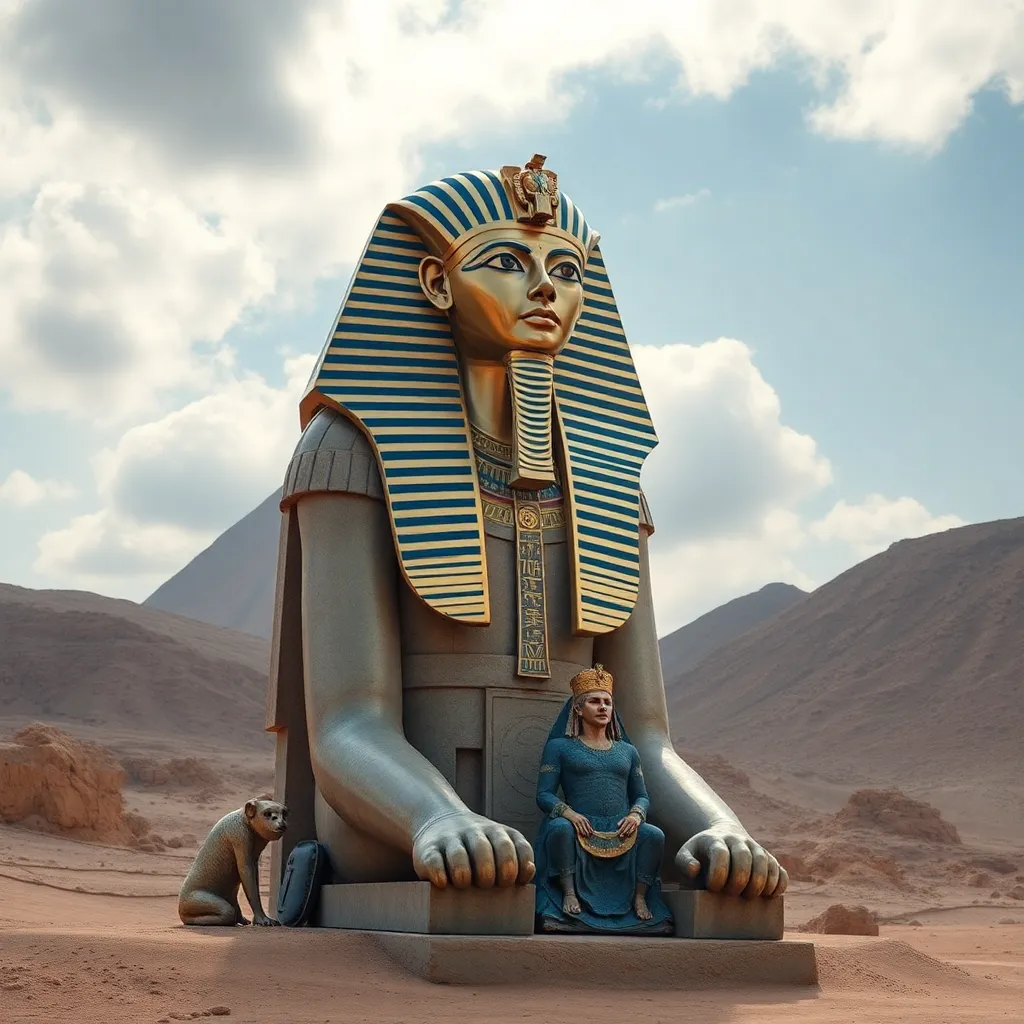The Role of the Pharaoh in Maintaining Cosmic Harmony
I. Introduction
In ancient Egyptian belief, the concept of cosmic harmony, known as Ma’at, represented the ideal order of the universe, encompassing truth, balance, and justice. It was the Pharaoh’s divine duty to uphold this harmony, serving as a crucial link between the gods and the people. This article explores the multifaceted role of the Pharaoh in maintaining cosmic harmony, shedding light on the complex interplay between leadership, religion, and societal order in ancient Egypt.
II. The Pharaoh as a Divine Mediator
The Pharaoh was regarded not only as a king but also as a divine figure, believed to be the living embodiment of the god Horus. This divine status granted the Pharaoh a unique role as a mediator between the gods and the Egyptian populace.
- The Pharaoh’s divine nature was reflected in his titles, such as “Son of Ra,” which emphasized his connection to the sun god.
- Through rituals and offerings, the Pharaoh ensured that the favor of the gods was maintained, which was essential for the prosperity of the land.
Rituals performed by the Pharaoh included offerings at temples, festivals celebrating the gods, and ceremonies that marked significant agricultural events. These actions were vital in ensuring that cosmic harmony was preserved and that the gods remained pleased with the people.
III. The Concept of Ma’at
Ma’at was central to ancient Egyptian culture, representing not only the cosmic order but also the principles of truth, morality, and justice. The Pharaoh had a profound responsibility in upholding Ma’at, which was believed to be essential for the stability of the universe.
- Upholding Ma’at involved maintaining justice and order within society, ensuring that laws were followed and that the rights of individuals were respected.
- The relationship between Ma’at and justice was evident in the legal system, where the Pharaoh was seen as the ultimate judge and arbiter of disputes.
The Pharaoh’s role in maintaining Ma’at was crucial, as any failure to uphold this cosmic balance could lead to chaos and disorder, threatening the stability of the kingdom.
IV. Rituals and Ceremonies
The Pharaoh participated in numerous rituals and ceremonies that were essential for maintaining cosmic balance. Major rituals included:
- The Sed Festival, which celebrated the Pharaoh’s continued vitality and ensured his divine right to rule.
- Rituals performed during the inundation of the Nile, which were believed to secure a bountiful harvest.
- The Opening of the Mouth ceremony, which symbolically brought a statue of the god to life, connecting the divine and the mortal realms.
These rituals were not only religious observances but also public spectacles that reinforced the Pharaoh’s authority and divine connection. Historical case studies, such as the reign of Ramses II, demonstrate how these ceremonies were used to solidify the Pharaoh’s power and maintain cosmic harmony.
V. The Pharaoh’s Role in Agriculture and the Economy
Agricultural prosperity was directly linked to cosmic harmony in ancient Egypt. The Pharaoh played a pivotal role in this aspect, influencing flood cycles and ensuring successful harvests.
- The annual flooding of the Nile was critical for farming; the Pharaoh was believed to have the power to influence this natural event through rituals and prayers.
- Economic policies implemented by the Pharaoh were designed to align with the agricultural cycles, ensuring that resources were managed effectively.
By overseeing agricultural activities and promoting policies that supported the economy, the Pharaoh contributed significantly to the maintenance of cosmic balance within society.
VI. Military Leadership and Protection of the Realm
The Pharaoh was not only a spiritual leader but also a military commander, tasked with protecting the realm from external threats. This warrior aspect of the Pharaoh was essential for maintaining order and stability.
- Military campaigns were often undertaken to expand territory and secure resources, which were necessary for the kingdom’s prosperity.
- Successful military leadership reinforced the Pharaoh’s status as a protector, crucial for maintaining the loyalty of the people and the favor of the gods.
The impact of successful military leadership on cosmic harmony was evident, as victories brought peace and stability, which were essential for the flourishing of civilization.
VII. Art, Architecture, and Symbolism
The Pharaoh’s role in maintaining cosmic order was also reflected in monumental art and architecture. Significant structures, such as temples and pyramids, served both practical and symbolic purposes.
- Monuments like the Great Pyramid of Giza were not only tombs but also representations of the Pharaoh’s divine role in the afterlife and cosmic order.
- Artworks depicting the Pharaoh often included symbols of power and divinity, such as the ankh (symbol of life) and the crook and flail (symbols of kingship).
This architecture and symbolism reinforced the Pharaoh’s status as a divine mediator and protector of Ma’at, illustrating the interconnectedness of art, religion, and governance.
VIII. Conclusion
The Pharaoh’s multifaceted role in maintaining cosmic harmony in ancient Egypt encompassed spiritual, agricultural, military, and artistic dimensions. By upholding Ma’at and serving as a divine mediator, the Pharaoh ensured the stability and prosperity of society. The legacy of the Pharaoh’s leadership continues to resonate in modern understanding of ancient Egyptian culture, highlighting the intricate interplay between governance and cosmic balance. Ultimately, the Pharaoh was not just a ruler but a vital force in the ongoing quest for harmony and order within the universe.




